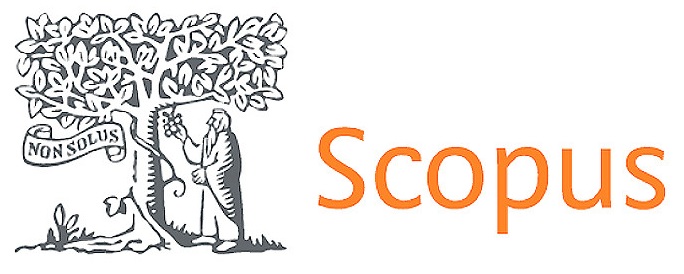Evidence-based pediatric fall safety bundles: a nursing perspective on integrated prevention strategies
DOI:
https://doi.org/10.56294/mw2025847Keywords:
pediatric falls, fall prevention, safety bundles, nursing, patient safety, quality improvementAbstract
Background: Pediatric falls in healthcare settings pose unique risks due to developmental factors, occurring at rates up to 1.3 per 1,000 patient-days and accounting for 20-30% of adverse events. Evidence-based safety bundles have emerged as integrated prevention strategies, yet gaps in synthesis persist, particularly regarding nursing roles and implementation challenges. Objective: This short communication synthesizes current evidence on the effectiveness, components, and challenges of pediatric fall safety bundles to guide nursing practice and quality improvement. Methods: A narrative synthesis of literature, including historical developments, bundle components, implementation determinants, and research gaps, drawing from meta-analyses, quality improvement studies, and collaborative networks. Key Findings: Prevention strategies evolved from single interventions in the 1980s-1990s to multicomponent bundles by the 2010s, emphasizing risk assessment, family education, environmental modifications, and staff training. Nursing leadership is central, driving implementation through champion roles, direct care, and monitoring. Facilitators include leadership support and standardization, while barriers encompass resource constraints, staff turnover, and methodological inconsistencies. Research gaps highlight needs for controlled trials, economic evaluations, and population-specific adaptations. Implications: Recommendations prioritize bundle adoption, competency programs, technology integration, and rigorous future research. From a nursing perspective, these strategies foster holistic prevention, reducing falls and enhancing outcomes. Conclusion: Bundles offer a robust framework for safer pediatric care, with nurses pivotal in advancing evidence-informed innovation and systemic resilience.
References
1. DiGerolamo K, Davis KF. An integrative review of pediatric fall risk assessment tools. J Pediatr Nurs. 2017;34:23-28. doi:10.1016/j.pedn.2017.02.036
2. Parker EH, Pitts K, Berger W, et al. A quality improvement initiative to reduce pediatric falls in a large academic medical center. Pediatr Qual Saf. 2019;4(5):e208. doi:10.1097/pq9.0000000000000208
3. Kim ML, Gelman A, Miller L, et al. "Keep Me Safe": A standardized process for reducing harm from in-hospital newborn falls/drops. Pediatr Qual Saf. 2019;4(2):e134. doi:10.1097/pq9.0000000000000134
4. Cooper CL. Pediatric falls: state of the science. Pediatr Nurs. 2017;43(4):166-170.
5. Murray JS, Noonan C, Quigley S, Curley MAQ. Medical device-related hospital-acquired pressure ulcers in children: an integrative review. J Pediatr Nurs. 2018;38:31-37. doi:10.1016/j.pedn.2017.10.003
6. Kramlich D, Dende D. Pediatric fall prevention: a systematic review. J Pediatr Nurs. 2016;31(4):e217-e224. doi:10.1016/j.pedn.2016.01.007
7. Rheuame P, Gooding C. Pediatric fall risk assessment: a literature review. Pediatr Nurs. 2015;41(4):179-185.
8. Strohbin N, Moreno MA. Pediatric fall prevention in the inpatient setting. JAMA Pediatr. 2021;175(4):432. doi:10.1001/jamapediatrics.2020.6016
9. Benning S, Webb T. Taking the fall for kids: a journey to reducing pediatric falls. J Pediatr Nurs. 2019;46:32-36. doi:10.1016/j.pedn.2019.03.008
10. Lyren A, Coffey M, Shepherd M, et al. Pediatric hospital falls and injuries before and after implementation of a fall bundle. Pediatrics. 2021;147(3):e20200408. doi:10.1542/peds.2020-0408
11. Razmus I, Wilson D. Current trends in pediatric fall prevention: an integrative research review. J Nurs Care Qual. 2006;21(1):23-28. doi:10.1097/00001786-200601000-00007
12. Hill-Rodriguez D, Messmer PR, Williams PD, et al. The Humpty Dumpty Falls Scale: a case-control study. J Spec Pediatr Nurs. 2009;14(1):22-32. doi:10.1111/j.1744-6155.2008.00166.x
13. Razmus I, Davis D, Smith H. Development of the CHAMPS pediatric fall risk assessment tool. Pediatr Nurs. 2006;32(2):121-124.
14. Chen L, Liu W, Li H. Development of an evidence-based care bundle protocol for preventing falls in hospitalized children: Delphi study and trial test. Nurs Open. 2022;9(6):2427-2439. doi:10.1002/nop2.1427
15. Pauley BJ, Houston LS, Cheng D, Johnston DM. Clinical relevance of the Humpty Dumpty Falls Scale in a pediatric specialty hospital. Pediatr Nurs. 2014;40(3):137-142.
16. Kim ML, Gelman A, Miller L, et al. "Keep Me Safe": A standardized process for reducing harm from in-hospital newborn falls/drops. Pediatr Qual Saf. 2019;4(2):e134. doi:10.1097/pq9.0000000000000134
17. Miner J. Implementation of a comprehensive safety bundle to support newborn fall/drop event prevention and response. Nurs Womens Health. 2019;23(4):334-341. doi:10.1016/j.nwh.2019.06.002
18. Lawrence N, Christian R, Palokas M, Upchurch L. Fall prevention in a pediatric unit: a best practice implementation project. JBI Evid Implement. 2024;22(1):73-82. doi:10.1097/xeb.0000000000000424
19. Benning S, Webb T. Taking the fall for kids: a journey to reducing pediatric falls. J Pediatr Nurs. 2019;46:32-36. doi:10.1016/j.pedn.2019.03.008
20. Brás AMR, Quitério MMSL, Nunes E. Nurse's interventions in preventing falls in hospitalized children: scoping review. Rev Bras Enferm. 2020;73(6):e20190409. doi:10.1590/0034-7167-2019-0409
21. Alba LM, Siqueira FPC, Spadella MA. Segurança da criança hospitalizada: validação das intervenções para prevenção de quedas em um hospital materno-infantil. Peer Rev. 2023;5(8):330-345. doi:10.53660/330.prw806b
22. Heng H, Slade SC, Jazayeri D, et al. Healthcare professional perspectives on barriers and enablers to falls prevention education: a qualitative study. PLoS One. 2022;17(4):e0266797. doi:10.1371/journal.pone.0266797
23. Cesare M, Albanese S, Sansoni J, et al. Assessing the alignment between the Humpty Dumpty Fall Scale and fall risk nursing diagnosis in pediatric patients: a retrospective ROC curve analysis. Healthcare. 2025;13(14):1748. doi:10.3390/healthcare13141748
24. Schwendimann R, Bühler H, De Geest S, Milisen K. The occurrence, types, consequences and preventability of in-hospital adverse events - a scoping review. BMC Health Serv Res. 2018;18(1):521. doi:10.1186/s12913-018-3335-z
25. Staggs VS, Mion LC, Shorr RI. Assisted and unassisted falls: different events, different outcomes, different implications for quality of hospital care. Jt Comm J Qual Patient Saf. 2014;40(8):358-364. doi:10.1016/s1553-7250(14)40047-3
26. Oliver D, Healey F, Haines TP. Preventing falls and fall-related injuries in hospitals. Clin Geriatr Med. 2010;26(4):645-692. doi:10.1016/j.cger.2010.06.005
27. Alrasheeday AM, Alkubati SA, Alqalah TA, Alrubaiee GG, Alshammari B, Almazan JU, Abdullah SO, Loutfy A. Nursing students' perceptions of patient safety culture and barriers to reporting medication errors: A cross-sectional study. Nurse Education Today. 2025 Mar 1;146:106539.
28. Loutfy A, Zoromba MA, Mohamed MA, El-Gazar HE, Andargeery SY, El-Monshed AH, Van Belkum C, Ali AS. Family-centred care as a mediator in the relationship between parental nurse support and parental stress in neonatal intensive care units. BMC nursing. 2024 Aug 16;23(1):572.
Downloads
Published
Issue
Section
License
Copyright (c) 2025 Corrien Van Belkum, Amina Elzeiny, Ahmed Loutfy , Moataz Abdelsalam, Abdelhameed Elshenawy (Author)

This work is licensed under a Creative Commons Attribution 4.0 International License.
The article is distributed under the Creative Commons Attribution 4.0 License. Unless otherwise stated, associated published material is distributed under the same licence.






